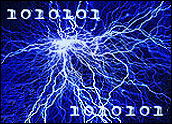
In four years, driving a car in the San Francisco Bay area may involve a variation of the “plug and play” concept. Think “plug and drive,” if the mayors of San Francisco, Oakland and San Jose and start-up Better Place have their way.
The company, founded by former SAP executive and Wired magazine cover subject Shai Agassi, announced a private-public partnership Thursday with the three mayors and regional entities to begin building the support infrastructure for electric car use in the Bay Area. The plan requires US$1 billion in investment, and media reports say that money would be used to install 250,000 charging ports in homes, businesses and public areas and build 200 substations where drivers could exchange drained electric car batteries for fully charged ones.
“Our aim is to make the Bay Area — and eventually California — the electric vehicle capital of the U.S.,” San Francisco Mayor Gavin Newsom said.
Better Business Model?
The plan announced Thursday represents Better Place’s entry into the U.S. market. Agassi has already struck deals with Israel, Denmark and Australia for the installation of a similar infrastructure for electric vehicle support.
On its Web site, Better Place’s business model is compared to that used by the mobile phone industry. Drivers pay for an electric mileage plan, just like cell phone customers pay for how many minutes they use on their handsets. Drivers are charged for accessing plug-in stations and battery-replacement centers. Better Place makes money by running those centers.
What about the electric cars, which are currently considered to be too cost-prohibitive for mainstream use? Better Place promises to make them much more affordable — possibly free in some cities — because of discounts tied to economic and environmental incentives.
“This is transportation as a sustainable service, with drivers as subscribers, and Better Place as a true ‘mobility operator,'” according to the company’s Web site.
Better Place executives were all attending a conference and were not available for comment on Friday.
Good Idea, But …
Stephen Stokes, vice president of business and climate change at AMR Research, earlier this year co-authored a report on the viability of current electric car concepts, “Living (and Driving) in Electric Dreams.” One section of the report comments on Better Place’s business model and whether or not the nation’s transportation infrastructure could accommodate the company’s ambitious plans.
“The nature, rate and rollout of this transformation may not have been fully incorporated into Better Place’s model in a fashion that either captures the nature of the transport or energy challenge or the full potential of the opportunity. Much of the challenge relates to the future nature of the supply-demand relationship and the very nature of society and transport in the future,” the report stated.
Stokes provided a more direct — and more colorful — analysis of the Bay Area announcement. “On-demand cars that plug in and say, ‘give me power now,’ that isn’t doing the right thing in terms of being supply-led versus demand-led,” Stokes told TechNewsWorld. “The future isn’t just about technology czars. A lot of it is about behavioral change and attitude change. Should the Bay Area be spending a billion dollars on a plan that continues to congest the roads, or should they be spending that money on electric rail transit?
“Just mapping the existing social contract between drivers and a four-wheel vehicle, and pushing that forward into the future is uncreative and doesn’t really embrace the true challenges of the future.”
A Step Further
Stokes falls more in line with some of the electric transportation concepts set forth in New York Times columnist Thomas Friedman’s new book, Hot, Flat and Crowded. A chapter regarding renewable energy posits a near future where hybrid or pure-electric cars plug into ports similar to those envisioned by Better Place, but any unused energy is sold back to the utility thanks to smart cars talking to smart power grids that monitor peaks and valleys in electric usage.
“A car has to be another smart device which is intelligently talking to utilities,” Stokes said. “My concerns is that an electric car (as conceived by Better Place) is transitional technology, but the more obvious transitional technologies are hybrid vehicles and the plug that you plug in your garage at your home.”



















































